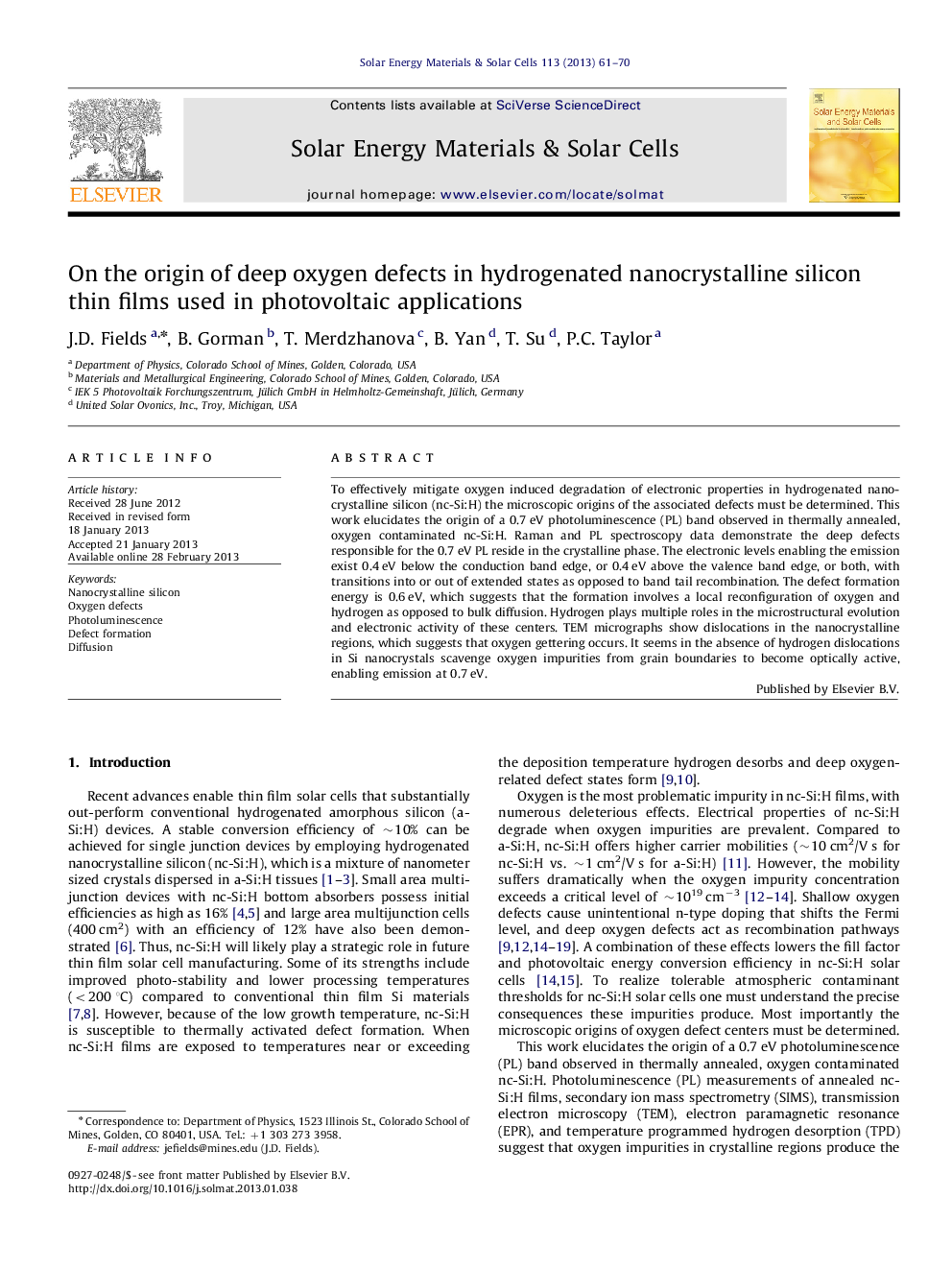| کد مقاله | کد نشریه | سال انتشار | مقاله انگلیسی | نسخه تمام متن |
|---|---|---|---|---|
| 78263 | 49324 | 2013 | 10 صفحه PDF | دانلود رایگان |

To effectively mitigate oxygen induced degradation of electronic properties in hydrogenated nanocrystalline silicon (nc-Si:H) the microscopic origins of the associated defects must be determined. This work elucidates the origin of a 0.7 eV photoluminescence (PL) band observed in thermally annealed, oxygen contaminated nc-Si:H. Raman and PL spectroscopy data demonstrate the deep defects responsible for the 0.7 eV PL reside in the crystalline phase. The electronic levels enabling the emission exist 0.4 eV below the conduction band edge, or 0.4 eV above the valence band edge, or both, with transitions into or out of extended states as opposed to band tail recombination. The defect formation energy is 0.6 eV, which suggests that the formation involves a local reconfiguration of oxygen and hydrogen as opposed to bulk diffusion. Hydrogen plays multiple roles in the microstructural evolution and electronic activity of these centers. TEM micrographs show dislocations in the nanocrystalline regions, which suggests that oxygen gettering occurs. It seems in the absence of hydrogen dislocations in Si nanocrystals scavenge oxygen impurities from grain boundaries to become optically active, enabling emission at 0.7 eV.
► PL measurements on nc-Si:H films reveal a defect band, at 0.7 eV, attributed to deep oxygen defects.
► PL and Raman spectroscopy measurements prove defects reside in crystalline phase.
► Experiments show 0.6 eV activation energy for defect formation process (suggests mechanism).
► Origin of deep defect centers argued to be oxygen interactions with dislocations in nanocrystals.
► TEM confirms nanocrystals possess dislocations, strengthening our hypotheses.
Journal: Solar Energy Materials and Solar Cells - Volume 113, June 2013, Pages 61–70